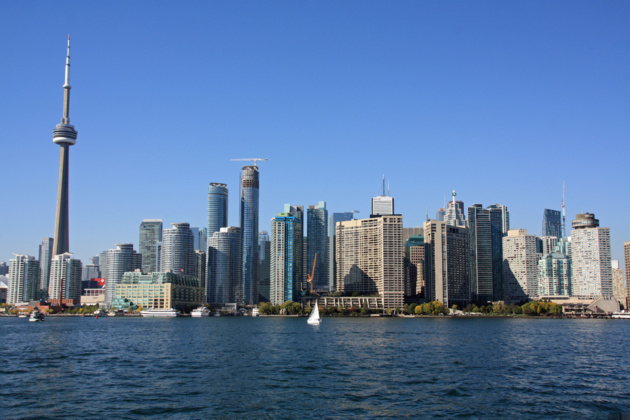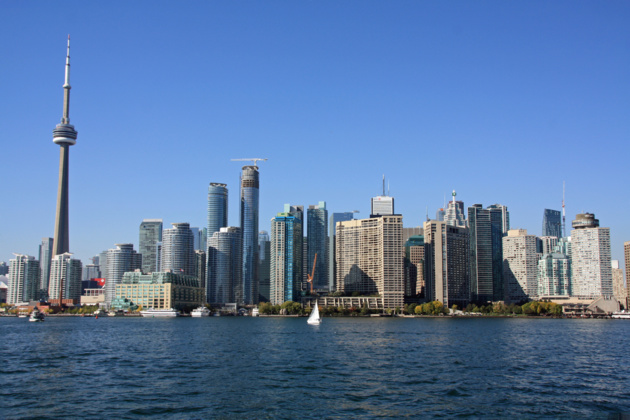
Credits Christine Wagner/Flickr
In his 2003 mockumentary simply called Hollywood North, director Peter O’Brian pokes fun at two Canadian film producers and their struggles in the late-1970s. He has actress Jennifer Tilly say to a journalist, in her most nasal voice, “I think Toronto truly is turning into Hollywood North”. She is not totally wrong, though. Since the 1980s, Toronto is building its reputation in the movie business, notably for Americans who are choosing to film there more and more.
An economic rivalry
The main reasons for producers to leave California or the New York streets are financial. As Canadian author and film critic Adam Nayman explains, “It is a way for American productions to avoid dealing with Hollywood (…), a way to get cheap and profitable labour. (….) Canada has become where people go for ‘financial runaways’”, or economic leaks.
On this point, Vancouver, which, as its output could also earn the title of Hollywood North, has two advantages. First is its proximity to California which allows easy travel to and from L.A. Second is its milder climate, compared to Toronto where it snows five months out of twelve among other weather problems.
But at the same time, Toronto is far from being outdone. The Government of Ontario is placing greater attention on its film sector. The Ontario Media Development Corporation (OMDC) and FilmOntario are the main organisations to attract foreign productions. They offer enticing tax programs such as the Production Services Tax Credits program as well as tax credit programs for special effects and animation. In these areas, Toronto asserts its growing expertise.
Important efforts were also made to raise Toronto to first place in infrastructure. Thanks to the construction of film sets, there now exists the giant Pinewood Studio, opened in 2008, which stretches over 20,000 square meters and is located only 20 minutes from downtown Toronto.
Another advantage lies in the city’s practical and “disguisable” architecture. Two or three fake street signs, some attention to detail, a little smoke, and Toronto can easily pass as New York, Chicago or even Boston. Some other trickery also needs to be mentioned. For example, the movie Good Will Hunting, featuring the distinguished American college MIT—located in Boston—, was in large part made in Toronto. Same goes for the thriller American Psycho with Christian Bale and for the highly acclaimed A History of Violence, released in 2005. As for superhero movies, the blockbuster The Incredible Hulk, the first of the X-men movies and the action-comedy Kick-Ass can be added to the list. The charade reaches its peak with Chicago, winner of Best Picture award, where one would think that the city plays a major role... This movie, too, was made mostly on Canadian soil.
A production in service of the U.S.
Since the U.S. film industry has entitled itself to Canada, relations between the two countries have not always been tension-free. Adam Nayman explains, “The relationship is not always great. In the U.S., people complain about finding a job because certain movies are now produced in Canada. At the same time, we [Canadians] fear that American productions are overtaking our industry”. Canada-U.S. economic friction is therefore based on the question of “cultural exception” and the status of Canadian film.
It is true that living next to such an influential neighbor is not always easy. The competition seems too harsh to even allow Canadian productions to compete. The U.S. has a large enough audience to sufficiently support and thus export big-budget movies. On the other hand, the U.S. dominates the market thanks to its one-of-a-kind historical studio system. There are no large Canadian studios like Sony Pictures or Colombia, which are large conglomerates similar to investment banks.
The difference in economic model is most seen in the type of movies produced: “There are no Canadian blockbusters… a blockbuster in Canada is more likely an art film, independently produced and which does well at the box office, rather than a large-scale, big-budget movie”, says Adam Nayman. “The directors whom I have interviewed over the years always tell the same joke: any Canadian film is always an independent film”.
Canadian film is accused of lacking exoticism and at first sight seems eternally condemned to the shadow of the U.S. With the exception of a few emblematic works, notably by Cronenberg, the public sees in Canadian film few differences from the U.S. For Canada, the difference lies in smaller budgets.
A style of its own
So what does it take for Canada to make a place in the international film scene? Without a doubt, it takes real artistic ambition and the will to promote an independent film industry. Toronto has done a lot thanks to the TIFF (Toronto International Film Festival). This event is non-competitive and, rather than naming winners, offers annual prizes rewarding the best international productions. It is strategically held in September, after the major European festivals. This allows it to include all movies still in production during the summer frenzy. Indeed, since its creation in the 1970s, the TIFF offers high-quality programming which does not cease to attract stars, producers and directors, as well as a growing public.
One must also remember that in the area of art film, Toronto also has its own history. Already by the 1980s, the Toronto New Wave had revolutionised the image of Canadian film. This movement was led by young, independent movie-makers such as Atom Egoyan, Bruce McDonald, Patricia Rozema, Clement Virgo and John Greyson.
For the last few years, however, certain critiques are speaking of a creative revival. The Toronto New Wave brings together film-makers who rely on small, even micro-budgets, to tell intimate stories with a modest décor. Willing to turn to crowd funding and to cast the same actors and friends, these productions ooze with DIY spirit. They reflect the inventiveness of a rather resourceful and digital generation. Among the artists to keep in mind is Brandon Cronenberg, who assures a successful revival.
These last years will have shown it. Toronto is still being spoken about on the big screen. In the cult film Scott Pilgrim Vs the World, released in 2010, viewers see Michael Cera’s character in many famous Toronto places like Casa Loma, Carlton Street and Cabbage Town. The final image in this 100% Canadian movie is when the evil Lucas Lee, battling in the film studio, throws Scott over a New York background. Finally, the screen tears to reveal the symbol of the Ontario metropolitan, the CN Tower: quite a subtle way to say that it is time to stop hiding. Toronto is indeed a city for film.




























